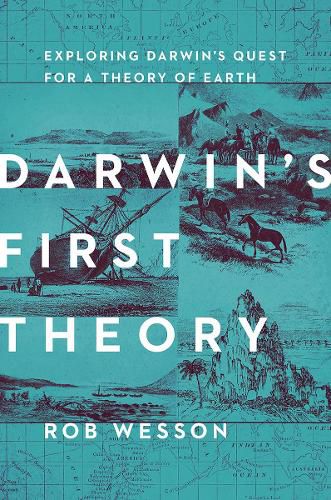Readings Newsletter
Become a Readings Member to make your shopping experience even easier.
Sign in or sign up for free!
You’re not far away from qualifying for FREE standard shipping within Australia
You’ve qualified for FREE standard shipping within Australia
The cart is loading…






Everybody knows–or thinks they know–Charles Darwin, the father of evolution and the man who altered the way we view our place in the world. But what most people do not know is that Darwin was on board the HMS Beagle as a geologist–on a mission to examine the land, not flora and fauna.Tracing Darwin’s footsteps in South America and beyond, geologist Rob Wesson sets out on a trek across the Andes, repeating the nautical surveys made by the Beagle’s crew, hunting for fossils in Uruguay and Argentina, and explores traces of long vanished glaciers in Scotland and Wales. By following Darwin’s path literally and intellectually, Rob experiences the landscape that absorbed Darwin, followed his reasoning about what he saw, and immerses himself in the same questions about the earth. Upon Darwin’s return from the five-year journey, he conceived his theory of tectonics–his first theory. These concepts and attitudes–the vastness of time; the enormous cumulative impact of almost imperceptibly slow change; change as a constant feature of the environment–underlie his subsequent discoveries in evolution. And this peculiar way of thinking remains vitally important today as we enter the Anthropocene.
$9.00 standard shipping within Australia
FREE standard shipping within Australia for orders over $100.00
Express & International shipping calculated at checkout
Everybody knows–or thinks they know–Charles Darwin, the father of evolution and the man who altered the way we view our place in the world. But what most people do not know is that Darwin was on board the HMS Beagle as a geologist–on a mission to examine the land, not flora and fauna.Tracing Darwin’s footsteps in South America and beyond, geologist Rob Wesson sets out on a trek across the Andes, repeating the nautical surveys made by the Beagle’s crew, hunting for fossils in Uruguay and Argentina, and explores traces of long vanished glaciers in Scotland and Wales. By following Darwin’s path literally and intellectually, Rob experiences the landscape that absorbed Darwin, followed his reasoning about what he saw, and immerses himself in the same questions about the earth. Upon Darwin’s return from the five-year journey, he conceived his theory of tectonics–his first theory. These concepts and attitudes–the vastness of time; the enormous cumulative impact of almost imperceptibly slow change; change as a constant feature of the environment–underlie his subsequent discoveries in evolution. And this peculiar way of thinking remains vitally important today as we enter the Anthropocene.